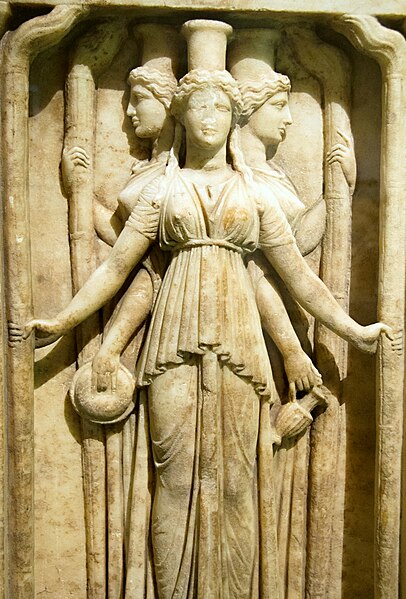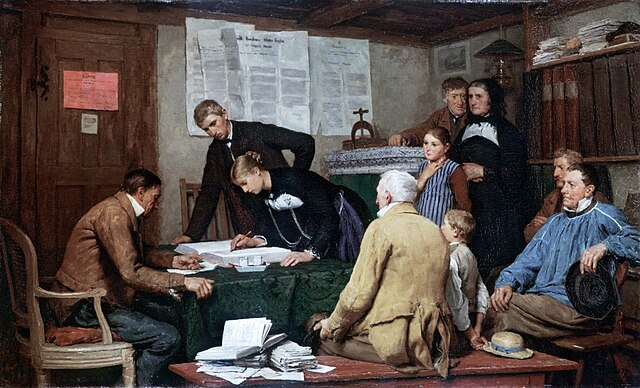In folklore, crossroads may represent a location "between the worlds" and, as such, a site where supernatural spirits can be contacted and paranormal events can take place. Symbolically, it can mean a locality where two realms touch and therefore represents liminality, a place literally "neither here nor there", "betwixt and between".
Relief triplicate Hekate marble - The Goddess Hekate resides at crossroads.
A herma was a statue associated with Hermes. It was used to mark boundaries and crossroads in ancient Greece, and thought to ward off evil. Museum of Ancient Messene, Greece.
In Hoodoo crossroads are where two roads meet to form an X. The crossroads in Hoodoo originates from the Kongo cosmogram in Central Africa.
In anthropology, liminality is the quality of ambiguity or disorientation that occurs in the middle stage of a rite of passage, when participants no longer hold their pre-ritual status but have not yet begun the transition to the status they will hold when the rite is complete. During a rite's liminal stage, participants "stand at the threshold" between their previous way of structuring their identity, time, or community, and a new way.
Initiation ritual of boys in Malawi. The ritual marks the passage from child to adult male, a liminal stage in the context of their lives.
Destruction, from The Course of Empire by Thomas Cole (1836)
Liminal phase of a rite of passage: Albert Anker's Die Ziviltrauung ("The Civil Marriage"), 1887
A painting depicting Jacob's Ladder to heaven







